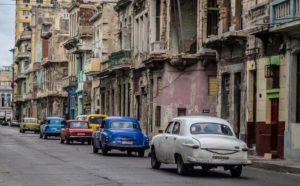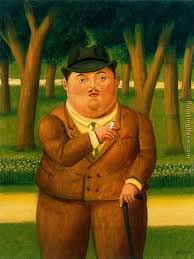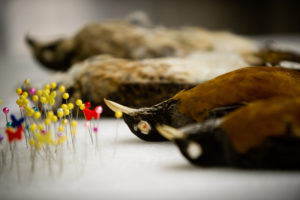As a tourist, one of your obligations is to shop. You do this for yourself and for others. A delightful scarf here, a lucky temple bracelet there, and sculpted frogs wherever you find them. You quietly shop and you collect and you forget. This is tourism at its very best.
Japan is probably my favourite tourist-shopping destination. You head off to your local suburban Peacock Department Store and you are sure to find curious and unusual treasures—a dried pack of seaweed, a porcelain bowl with painted fish, a vacuum-packed octopus, an elegant ink brush or knife—all delightful and inexpensive.
In Thailand you look out for bamboo placemats and silk underpants with green elephants. In India you find intricate metal cows and beads from the Nagaland. In Egypt you buy parchment, dusty antique jewellery and camel-bone miniatures.
In Cuba you buy nothing, as there is nothing to buy. Their best cigars and finest rum are all exported, so you are left with banana-leaf cigars and run-of-the-mill, bargain-basement Havana Club.
In certain towns where the tourist groups are bused, there are millions of identical Ché Guevara t-shirts, hats, licence plates and posters. In front of bakeries and drug stores there are constant line-ups as Cubans wait patiently to see what can suddenly be purchased.
In front of supermarkets, however, this is not the case.
Our first supermarket was in Viñales—an idyllic countryside town set in the middle of tobacco plantations and picturesque rock formations. Tourists come here to relax and do a bit of horse-riding along the unmarked trails. Everyone stays in the casa particulars (bed and breakfasts) for about two nights before heading back to their beach or boat worlds.
The supermarket there was picture-perfect: shelves were filled with bottles of rum, beer and wine which sold merrily at good strong Swiss prices. There were packs of chips, cookies, and cheese and the ubiquitous (expensive) bottled tourist water.
 The second grocery store was outside the city of Cienfuegos and we were quite excited when we encountered a uniformed security lady at the door who made us remove our packs and put them in a locker. This was obviously a first-class, though sadly undiscovered, store and theft was rampant.
The second grocery store was outside the city of Cienfuegos and we were quite excited when we encountered a uniformed security lady at the door who made us remove our packs and put them in a locker. This was obviously a first-class, though sadly undiscovered, store and theft was rampant.
As it turned out, all the shelves in the whole shop held the same item: miniature cartons of pineapple juice. These towered up to the ceiling along all the aisles. It was a stroll through a pineapple juice castle.
At the back of the shop was the fresh meat section. This consisted of two pigs that had been butchered, boiled, and packaged into two oblong plastic sausage cases about the size and shape of a real live pig. The colour was bubble-gum pink and there were foreign objects added for interest. This is Cuban ham.
Anticipation, exultation, disappointment, epiphany: Cuba in a nutshell. We bought enough pineapple juice to keep us in piña coladas for the rest of the trip.








